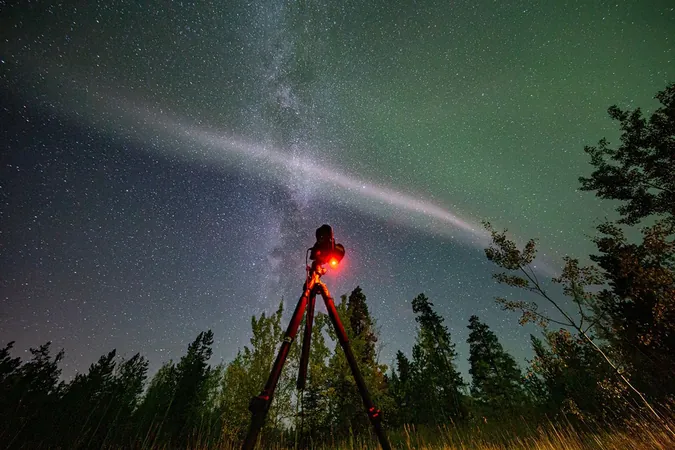
Exciting Breakthrough Achieved in NASA's TRACERS Mission—Get Ready for Launch!
2024-11-13
Author: Emily
NASA's TRACERS Mission Milestone
NASA has reached a significant milestone in its TRACERS (Tandem Reconnection and Cusp Electrodynamics Reconnaissance Satellites) mission, with the completion of its twin spacecraft, set for launch in April 2025!
Exploring Solar Wind and Magnetosphere
These cutting-edge satellites are designed to explore the intricate ways in which the solar wind—a relentless outpouring of charged particles emitted by the sun—interacts with the Earth’s magnetosphere. This important region, formed by our planet's magnetic field, affects not only our environment but also our technology and communications, making TRACERS pivotal in addressing fundamental questions about solar influence on Earth and space weather phenomena.
Understanding Magnetic Reconnection
At the heart of TRACERS’ mission is the study of magnetic reconnection, a dramatic release of energy that occurs when two magnetic fields collide. This phenomenon holds a special significance at the magnetopause—the point where solar wind meets the Earth's magnetic field. When a reconnection event occurs, it can propel solar wind particles—typically diverted around Earth—right into our atmosphere, creating breathtaking displays of auroras while also influencing space weather conditions.
The Importance of Space Weather
In today's technology-driven world, understanding space weather is crucial. Solar storms can disrupt power grids, compromise satellite communications, and even pose risks to astronauts in space. Therefore, the insights gained from the TRACERS mission could play a vital role in safeguarding our technological infrastructure and ensuring astronaut safety during missions.
Tandem Operations for Enhanced Data Analysis
To analyze the complexities of magnetic reconnection, the TRACERS spacecraft will operate in tandem, flying one behind the other through the polar cusps—narrow regions where the Earth’s magnetic field opens up over the North and South poles. By comparing data collected from each satellite, scientists will gain a clearer picture of how reconnection evolves and changes over time.
Recent Progress and Future Plans
Millennium Space Systems, a subsidiary of Boeing, has successfully built both spacecraft, finishing construction in October 2024. The team is currently integrating the TRACERS instruments, and as they advance to the testing phase, the satellites will soon be transported to Vandenberg Space Force Base in California for assembly and integration with their launch vehicle.
Team Enthusiasm and Key Reviews
David Miles, the principal investigator of TRACERS at the University of Iowa, expressed enthusiasm, stating, "It's exciting to see the TRACERS instruments and the two spacecraft come together. The team is making excellent progress toward launch!"
Moreover, the mission recently passed a pivotal review, known as Key Decision Point D, which took place on August 8, 2024. This achievement marks TRACERS' transition into Phase D—where development concludes and spacecraft testing and integration into the launch vehicle begin, ramping up preparations for a successful launch.
"This team has been truly incredible," commented Skyler Kleinschmidt, TRACERS program executive at NASA Headquarters. "Building a spacecraft is never easy, but witnessing the teamwork and determination through all their challenges is inspiring."
Looking Ahead to 2025
As anticipation grows for the 2025 launch, TRACERS is set to rewrite our understanding of solar interactions and their impact on life on Earth. Stay tuned for more groundbreaking updates!









 Brasil (PT)
Brasil (PT)
 Canada (EN)
Canada (EN)
 Chile (ES)
Chile (ES)
 España (ES)
España (ES)
 France (FR)
France (FR)
 Hong Kong (EN)
Hong Kong (EN)
 Italia (IT)
Italia (IT)
 日本 (JA)
日本 (JA)
 Magyarország (HU)
Magyarország (HU)
 Norge (NO)
Norge (NO)
 Polska (PL)
Polska (PL)
 Schweiz (DE)
Schweiz (DE)
 Singapore (EN)
Singapore (EN)
 Sverige (SV)
Sverige (SV)
 Suomi (FI)
Suomi (FI)
 Türkiye (TR)
Türkiye (TR)